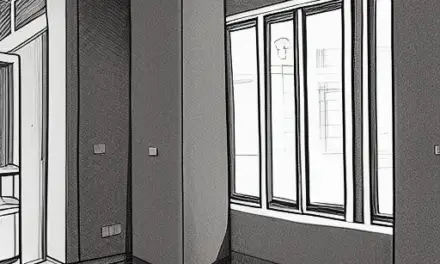Cacti can be used as an accent in flowerbeds, pathways, and alleyways. These plants are low-maintenance and drought-tolerant, and they add a unique and interesting flair to a yard. Here are some tips for incorporating cacti into your yard design.
Xeriscaping
There are literally hundreds of different cactus species in North America. They all have several physical adaptations that help them conserve water. Their prickly spines help protect them from water-seeking animals, while their large round stems are thick enough to hold a lot of water. In addition, their waxy skin helps reduce the amount of water they lose to evaporation.
Although xeriscaping is often associated with desert regions, it can also benefit landscapes in areas without drought. The process involves grouping plants with similar water needs. This can save you money and prevent overwatering plants. It also makes sense to separate thirsty plants from other plants in your landscape.
Some xeriscaping techniques incorporate the use of gravel or rocks. These materials help to retain moisture and drain water while also providing a tidy appearance. In addition, mulch can help retain moisture and keep the area looking tidy. This type of landscape design has many benefits, including its ability to create a beautiful landscape that requires little to no maintenance.
Xeriscaping is an innovative approach to landscaping that makes use of plants that require little water to thrive. It is a growing trend in landscape design that began in arid regions. This approach is not exclusive to xerophytes, but can include other types of plants such as ferns, lilies, and ornamental grasses. Moreover, it is important to use plants that are native to the region.
For a successful xeriscaping landscape design, you must carefully choose your plants. The plants should be drought tolerant and have a variety of heights. You should also consider their susceptibility to diseases and pests. Moreover, different parts of the property may require different amounts of sunlight and moisture.
Adding cactus to a flowerbed
Adding cactus to a landscape design is a great way to add a splash of color and texture to a flowerbed. Cacti are low-maintenance plants with a variety of unique shapes and colors. Their drought-tolerant nature saves you time and energy while providing long-lasting color and interest. Moreover, they can be used as the focal point of a flowerbed or a small area of landscaping.
There are hundreds of varieties of cacti and succulents to choose from. They vary in height, color, and texture, and you can choose a variety that fits your space. A desert-styled landscape design may include cacti or succulents mixed together. Succulents thrive in similar low-water environments and make attractive companion plants to cacti and other flowering plants.
Mexican fence post cacti can reach a height of 16 feet and have individual stems that are three to eight inches in diameter. They bloom in late spring and respond well to frequent watering during the warmer months. They will add color and height to a sunny home, and they will provide privacy.
Another cactus that you can plant in a flowerbed is the hedgehog cactus, also known as the claret cup cactus. This type of cactus is suitable for beginners and is a fire-resistant plant. It prefers soil with little or no clay or silt, which makes it perfect for flowerbeds.
Adding cactus to a landscape design is an excellent way to add a unique touch to the garden. Not only does it add color and texture, but it also looks fantastic. While cactus are slow to grow, they are worth the wait. They produce beautiful flowers that contrast beautifully with the green fleshy plant.
Planting cactus in an alleyway
Planting cactus in an allewayway is a great way to add color and texture without a lot of water. You can plant different types to create a showy effect and add a Southwestern feel to your space. These low-maintenance plants can be found in a variety of shapes, sizes, and textures and are perfect for any location. For an extra dramatic effect, plant them in multiples. You can plant a single cactus or several in a row to make a focal point.
The first step in planting cactus in an alleyway is to choose a species that has the ability to thrive in its chosen habitat. Many species are drought-tolerant, and some require no water. This means that you can plant them in a dry area and enjoy beautiful blooms throughout the year.
If you choose to plant a cactus in an alleyway, make sure to choose a pot large enough to accommodate the size of the root ball. For this purpose, you should use an unglazed container. Unlike other pots, which will dry out quickly, unglazed containers will allow the soil to stay moist longer.
Adding cactus to a pathway
Adding cactus to a walkway or pathway is a great way to add color and texture while using minimal water. Cactus come in various shapes and colors and can be paired with other plants. They look best when grouped together in a row, but they can also be used alone.
Many cacti are architectural plants, but you can also plant them in your landscape as a unique accent. Some cacti have short, squat shapes, while others are tall and thin. These plants also make great additions to dry areas.
Adding cacti to a pathway in landscape design is a great way to accent a pathway and complement the surrounding region. For example, if you have a concrete pathway, adding cacti next to smooth stones will complement the concrete surface. You can also add tiny contemporary lamps to spotlight the statement cacti at night.
Adding cacti to a pathway will help you maintain a beautiful landscape. It can also fill a shady area in your landscape design. Large cacti can take up a lot of space, but they are visually stunning. They also make a great centerpiece. And if you have a pool, you can even plant cacti near it for an oasis near the water.
While adding cacti to a pathway is a great way to add color and a cactus garden to your pathway, it does require more money and work. You will have to plant cacti of different sizes around your pathway. Make sure to place the cacti in an arrangement that will make for a seamless transition between the plants.
Watering cactus
When watering cacti in landscape design, you need to make sure the soil contains adequate drainage. If it does not, you can drill additional drainage holes or use a planter insert in the pot. Once your cactus is established, water it once a week or so. It is best to use tepid water, as some cacti are sensitive to minerals in tap water. Use a watering can with a long thin spout to reach the potting soil. Pour water into the soil, and let it stand for 30 minutes. If the water sits in the hole, the plant needs more water.
Watering cacti is necessary to maintain their health. During the summer, you should water your cactus at least every 10 days. If you see that it has wrinkles on its leaves, it means it has been too dry. When this happens, you can water it by soaking it. However, make sure not to let the water sit on the cactus’ surface. Otherwise, it will absorb too much water, causing the plant to become sick.
A good soil is vital for cacti to thrive in landscape design. It needs to be well-drained so that excess water can drain away easily. Soil that is too heavy or clay-like will cause the lower stems and roots to rot. Also, a full-sun exposure will dry out the plant more quickly than a shady or drafty location. Aside from proper watering, make sure to check the soil moisture level by sticking your finger into the soil and checking it.
Cactus can be planted indoors or outdoors, and they thrive in fast-draining soil. Ideally, they should be planted near a south or west-facing window. When they are big enough, they can be transplanted outdoors into a pot.






